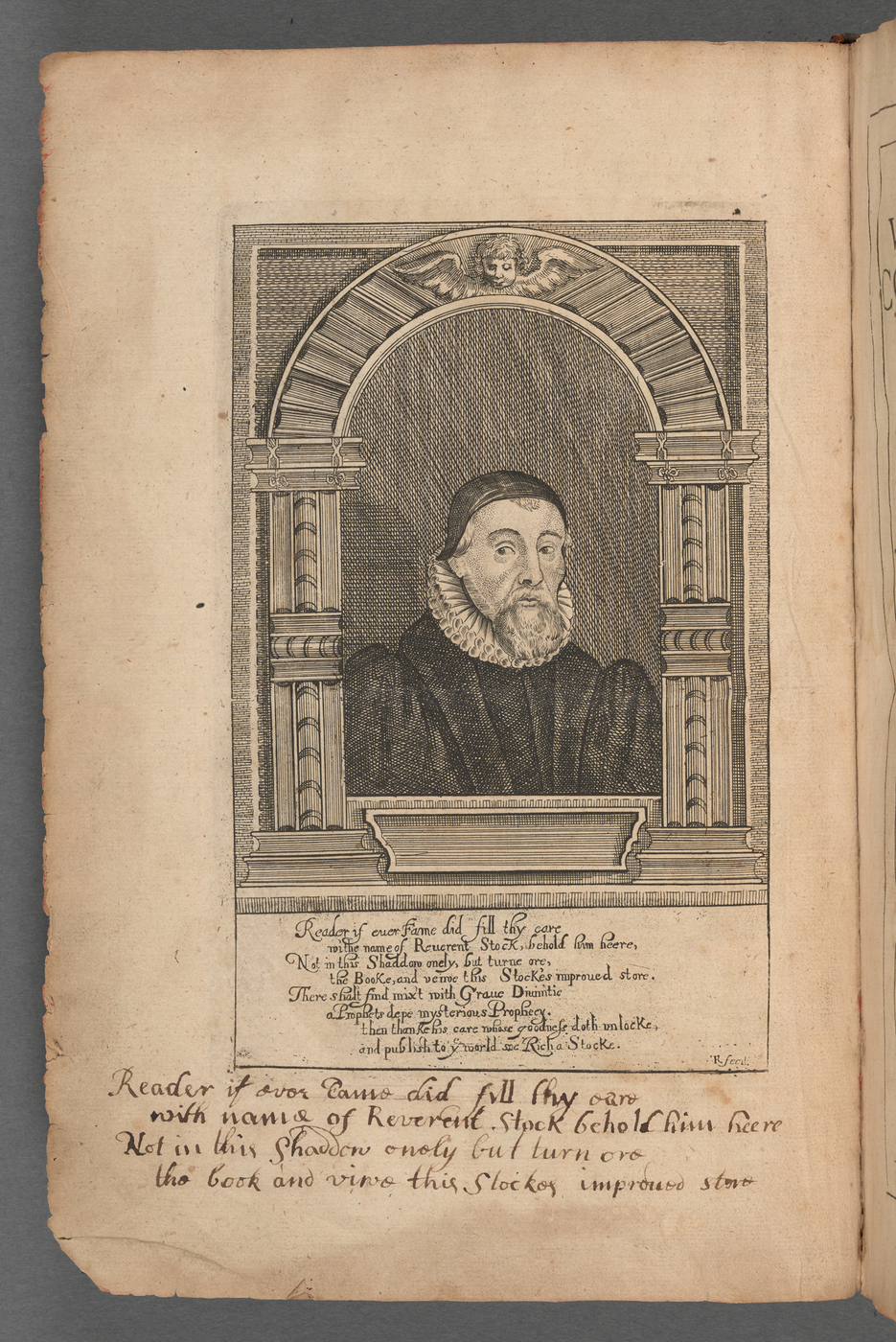Conclusion
Hand-coloured plate (detail) from The Book of Common Prayer (London, 1678), John Rylands Research Institute and Library, David Lloyd Roberts Book Collection R51596.1.
How were books reinvented using visual material? And how did readers and collectors respond to the illustrative matter in their books?
Intended as a starting-point for interested individuals wishing to delve further into the topic of extra-illustration and marginalia studies, this exhibition has explored the questions above using only a handful of books from the John Rylands Research Institute and Library.
Other extra-illustrated early modern texts of note at the John Rylands Research Institute and Library include a series of mazarinades – political pamphlets published in France during Le Fronde (the French civil wars of 1648 to 1653). Many of these libelles were scurrilous satires against Cardinal Jules Mazarin (1602–1661), the Chief Minister of France. Some of the mazarinades within the Rylands’ collection are extra-illustrated with portraits of Mazarin and other key political figures such as Mathieu Molé (1584–1656) and Antoine d’Aumont (1601–1669), engraved by Balthasar Moncornet (1600–1668).
Other genres of early modern book not covered in this exhibition include technical treatises and scientific and mathematical works published in early modern England and Europe. Such genres lent themselves especially well to readerly engagement, from the annotating of diagrams to the practising of mathematical proofs in the margins.1
More annotations: a reader copying the accompanying verse to the frontispiece portrait of Richard Stock (1568/9–1626), rector of All Hallows, Bread Street, London. Richard Stock, A Learned and Very Usefull Commentary Upon the Whole Prophesie of Malachy (London, 1641).
Image reproduced courtesy of The Burke Library, Union Theological Seminary, New York
Call no. 1641 S86
Finally, there are other ways in which readers and collectors contributed visual material to their books. The possibilities are almost limitless. Anonymous individuals and renowned Renaissance scholars alike drew in the margins, flyleaves, or empty spaces on title pages. Title-page vignettes could be cut out and replaced with a drawing. In fact, the art of cutting and pasting was a creative act as much as a destructive one.2 Cutting and pasting did not merely involve tipping in images but creating collages from images taken from other books or prints, transforming frontispieces and embellishing the main body of the text.
As this exhibition has shown, readers and collectors, then as now, were fascinated with the visual content of books. They sought to create this content themselves by tipping in portraits of authors and individuals associated with the text. They glossed the meaning of images by annotating them, and ornamented them with colour. Yet, these images were also defaced, not always for iconoclastic reasons but simply for the banal practicality of searching for a space in which to write.
Further Reading
Blake, Erin C., and Stuart J. Sillars, Extending the Book: The Art of Extra-Illustration (Washington, D.C.: Folger Shakespeare Library, 2010)
Park, Julie, and Adam Smyth, eds, Extra Extra: The Material History of the Visually Altered Book (forthcoming)
Peltz, Lucy, Facing the Text: Extra-Illustration, Print Culture, and Society in Britain 1769–1840 (San Marino: The Huntington Library, 2017)
Scott-Warren, Jason, ‘Reading on the Threshold’, in Thinking on Thresholds: The Poetics of Transitive Spaces, ed. by Subha Mukherji (London, Anthem Press, 2011), pp. 157–171
Other Projects
Early Modern Female Book Ownership
The Early Modern Marginalia Research Network
Marginalia and the Early Modern Woman Writer, 1530–1660 (Centre for Early Modern Studies, The Australian National University)
Other Exhibitions
‘Extending the Book: the Art of Extra-Illustration’, Folger Shakespeare Library, Washington, D.C. (28 January–25 May 2010)
‘Marginalia in the Whipple Collections’, Whipple Museum of the History of Science, University of Cambridge (February–July 2018)
‘Marginalia Profiles: Figure Drawings in CRRS Collections’ [digital exhibition], Centre for Renaissance and Reformation Studies, Victoria University in the University of Toronto
‘Marks in Books’ [digital exhibition], The Special Collections Research Center, University of Michigan Library
‘Pop-Up Books through the Ages’, The Newberry Library, Chicago (21 March–15 July 2023)

